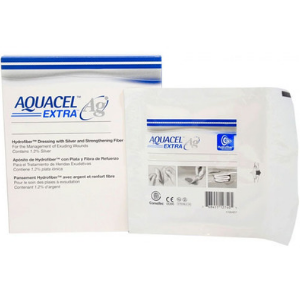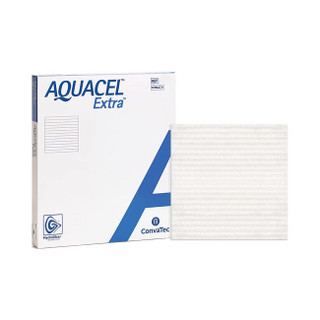How to Use Aquacel Ag Dressings
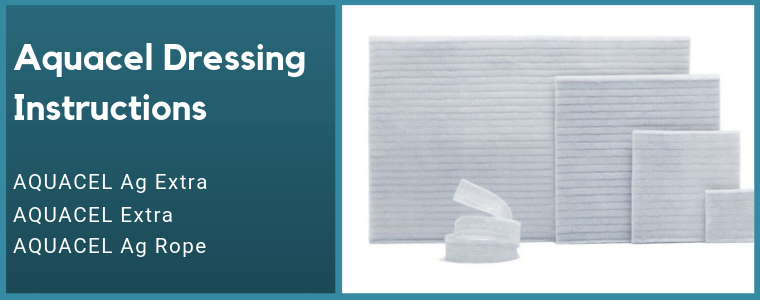
What is Aquacel AG?
Aquacel is a line of antimicrobial dressings designed to block bacteria from entering a wound. These primary dressings are made with hydrofiber, which is a special material that forms a gel when it comes into contact with wound exudate. Hydrofiber retains moisture better than gauze. This keeps the wound moist, creating the ideal environment for healing.
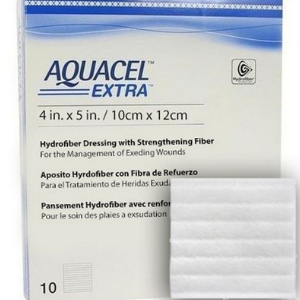
What is Aquacel Ag used for?
Aquacel Ag is a line of dressings that have ionic silver infused into the bandage. Silver wound dressings area meant to be used on infected wounds. Aquacel Ag bandages kill bacteria within 30 minutes of application and create a barrier to keep microorganisms out of the wound. They also bring down inflammation and reduce pain. Aquacel Ag slowly releases silver into the wound as it comes into contact with exudate. This means that the wound will not be flooded with too much silver at one time, which could damage the wound.
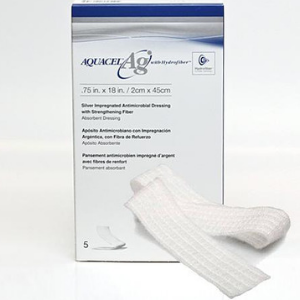
How to Use Aquacel AG Dressings
Please note that all wound care should be overseen by a healthcare professional. If you have any questions about your wound, consult your doctor. This guide is for educational purposes only and helps you better understand product usage.
General Application Instructions
- Wash your hands with soap and water. Wear gloves if available.
- Cleanse the wound using a wound cleanser like CarraKlenz, which is specially formulated to remove debris and maintain a moist healing environment. Do not use soap and water.
- Dry the skin around the wound to help the dressing adhere properly.
Shallow Wounds
- Cut or select a dressing that overlaps the wound by at least 1 cm (½ inch).
- Aquacel dressings will shrink and form a gel as they absorb wound fluid—this gel formation is normal and helps maintain a moist healing environment.
Deep Wounds
- Use Aquacel AG Rope with Strengthening Fiber for deep wounds.
- Loosely pack the wound with the ribbon dressing—fill no more than 80% full to allow for swelling as it absorbs exudate.
- Always leave at least 1 inch of the ribbon exposed outside the wound to make removal easier and safer.
For Foot and Leg Ulcers
- Ensure surrounding skin is clean and dry, as excess moisture can affect dressing adhesion.
- Select a dressing size that completely covers the ulcer and overlaps slightly onto healthy skin.
- Apply Aquacel AG directly onto the ulcer, ensuring full contact with the wound bed.
- Monitor for signs of infection, such as redness, swelling, or drainage, and follow your healthcare provider’s directions.
For Partial Thickness Burns
- The Aquacel AG should extend 2 inches (5 cm) beyond the burn or adjacent dressing.
- Cover with sterile gauze and secure using tape or a retention bandage.
- You may leave Aquacel AG in place for up to 14 days, or until your provider advises removal.
- Check the dressing regularly—especially if infection is suspected. Remove the outer gauze for inspection, but leave the Aquacel in place if it's still intact.
- As the wound heals and re-epithelializes, the dressing will naturally detach or be easily removed.
Apply a Secondary Dressing to Hold the Aquacel in Place
- Aquacel AG and Aquacel Extra do not have an adhesive border. You'll need a secondary dressing.
- Use an adhesive option like DuoDERM Signal, which:
- Helps keep the wound moist
- Alerts you when saturated with an indicator line
- Acts as a barrier to bacteria, viruses, and moisture
- If using gauze, change it once wound fluid appears on the outer layer.
When to Change Wound Dressings
- Initially, the dressing may need to be changed every 2 to 3 days.
- Aquacel AG can stay on for up to 7 days, or up to 14 days for partial-thickness burns, unless clinically indicated.
- Change the dressing if:
- It is saturated with wound fluid
- The edges begin to curl or bunch up
- There is leakage, increased pain, visible bleeding, or signs of infection
- As the wound heals and fluid production decreases, the dressing can remain in place longer.
- If the dressing becomes dry and hard, moisten it with sterile saline or sterile water before removal. Do not use tap or bottled water.
Dressing Removal
- Gather your supplies: clean gloves, wound cleanser, saline solution, and a new dressing.
- Wash your hands again before beginning the removal process.
- Gently lift the edges of the dressing. If it sticks to the wound bed, moisten it with saline and allow a few minutes for it to soften.
- Peel the dressing slowly, pulling it parallel to the skin to minimize discomfort.
- Inspect the wound for signs of healing or infection.
- Dispose of the used dressing per local healthcare waste guidelines.
- Wash your hands once more and follow any post-removal instructions from your provider.
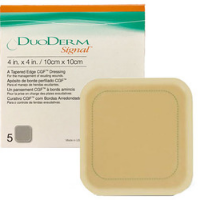
When to Contact a Doctor or Medical Provider?
When there are signs of chronic wound infection such as:
- Excessive drainage that has changed in color or consistency.
- Redness surrounding the wound, especially if the area of redness grows.
- Warmth around the wound.
- Increased pain or tenderness.
- Unusual odor.
- Sudden spike in glucose levels in a person with diabetes.
It is important to remember that you can always call your doctor with questions about your personal healthcare. Your medical team is invested in your care and they want your wound to heal well. Signs of infection should never be ignored.
If you have any doubt about your wound discharge or if what you are seeing, or smelling is normal, you should call them and ask. Wounds can become infected but with the proper wound dressings and care they can heal cleanly.
What is the Difference Between Aquacel Extra and Aquacel Ag Extra?
There are some differences between these two wound dressings by Convatec.
The first and most obvious is that the Aquacel AG Extra is impregnated with 1.2% ionic silver and the Aquacel Extra is not. What is the silver for? The ionic silver supports wound healing by fighting infection, decreasing pain, and keeping exudate in check. Aquacel AG Extra with ionic silver kills a broad spectrum of wound-related bacteria and yeasts. AG Extra is 9 times stronger and has 50% greater absorbency.
But, both dressings are powered by hydrofiber technology so they both are designed to support wound healing. Aquacel has strengthening fibers that lock in wound fluid and exudate inside the fiber itself. The fibers of the dressing swell and form microcontours, so each part of the wound bed is covered by the bandage.
To make Aquacel into a stronger bandage, Convatec has placed horizontal strengthening fibers across the wound dressing and then placed a second hydrofiber sheet over the top for even greater absorption. The two sheets are stitch-bonded for extra durability.
Aquacel AG can be cut in any direction which means it can fit even odd-shaped wounds without waste. Make sure you are using sterilized scissors to cut the dressing. You don't want to contaminate the dressing by using craft scissors.
